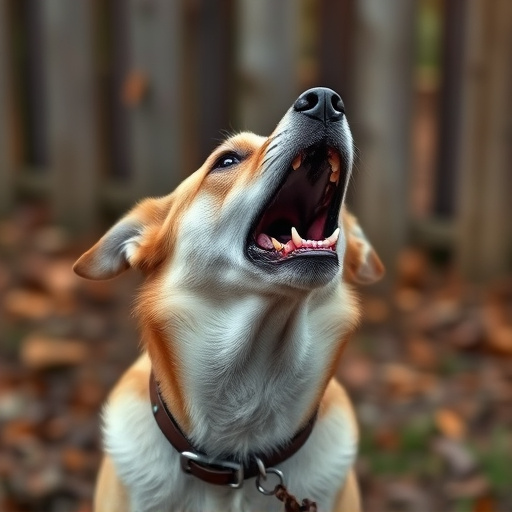The Canine Pepper Spray Deployment Distance Guide recommends a 3-5 meter range for effective targeting of aggressive dogs while minimizing bystander risk. Factors like concentration, weather, terrain and surface types influence performance, emphasizing safe handling practices and adherence to legal guidelines for responsible use in animal control scenarios.
“Animal control professionals often rely on pepper spray as a non-lethal option for subduing aggressive canines. Understanding the effectiveness of canine pepper spray and its deployment distance is crucial for safe and successful applications. This comprehensive guide explores the various factors influencing spray range, including wind, terrain, and spray type. We’ll also delve into best practices for handling and applying the spray, along with legal considerations for animal control officers using this powerful tool. By understanding these key aspects, you’ll be better equipped to navigate challenging situations.”
- Understanding Canine Pepper Spray Effectiveness
- Factors Influencing Deployment Distance
- Safe Handling and Application Techniques
- Legal Considerations for Animal Control Officers
Understanding Canine Pepper Spray Effectiveness
When considering canine pepper spray, it’s crucial to understand its effectiveness and deployment range. Unlike traditional pepper spray designed for human use, canine spray is formulated specifically to deter aggressive dogs while minimizing harm. Its effectiveness lies in a careful balance of capsaicin concentration and application method.
A Canine Pepper Spray Deployment Distance Guide suggests that these sprays are typically effective within a range of 3 to 5 meters (10-16 feet). This distance allows for controlled use, ensuring the spray reaches the target dog without posing significant risk to nearby humans or pets. The range also factors in the behavior and size of the target animal, with adjustments made accordingly to maximize effectiveness while maintaining safety.
Factors Influencing Deployment Distance
Several factors determine the deployment distance of canine pepper spray, making it an essential consideration for animal control professionals. The strength and concentration of the spray play a significant role; higher concentrations achieve greater distances, as the active ingredients can travel further before losing their effectiveness. Weather conditions also impact dispersal; wind direction and speed can carry the spray in unexpected ways, potentially affecting both the target area and bystanders if not used cautiously.
Additionally, terrain elevation and surface types influence how far the pepper spray reaches. Spraying upwind or on sloping ground increases the likelihood of it blowing back onto the user or nearby individuals. Conversely, flat, open spaces allow for a more predictable trajectory, enabling a better-controlled deployment distance. Understanding these factors is crucial for safe and effective use in animal control scenarios.
Safe Handling and Application Techniques
Proper handling and application techniques are paramount when using canine pepper spray, especially in controlling aggressive or dangerous animals. It’s crucial to understand the spray’s deployment distance guide for effective and safe use. Aiming directly at the animal’s face offers the best chance of neutralizing it quickly, typically within a 3-5 meter (10-16 feet) range. This can be achieved by using a steady hand and aiming slightly above the eye level to account for wind or movement.
Avoid spraying towards people or pets as it could cause harm. Always keep a safe distance, wearing protective gear like gloves and goggles if possible. After deployment, give the area time to clear before entering, usually 5-10 minutes. This ensures the spray dissipates, minimizing residual effects on both animals and humans present at the scene.
Legal Considerations for Animal Control Officers
Animal control officers must navigate a complex web of legal considerations when employing pepper spray, especially in public spaces. The use of such force is governed by state and local laws, which vary widely. Key factors include the specific circumstances of an encounter, the potential threat posed by the animal, and the reasonableness of the officer’s response.
Canine pepper spray deployment distance guides are valuable tools for officers, offering a strategic framework within legal boundaries. These guidelines ensure that officers use pepper spray responsibly, minimizing risks to both humans and animals while effectively managing hazardous situations. Understanding the legal nuances and following evidence-based practices is crucial for maintaining public safety and upholding the integrity of animal control procedures.
Animal control pepper spray is a valuable tool for officers dealing with aggressive canines. By understanding its effectiveness, deployment distance, safe handling practices, and legal considerations, professionals can ensure it’s used optimally and responsibly. This guide highlights the key aspects of canine pepper spray deployment distance, empowering animal control officers to make informed decisions in potentially dangerous situations.
